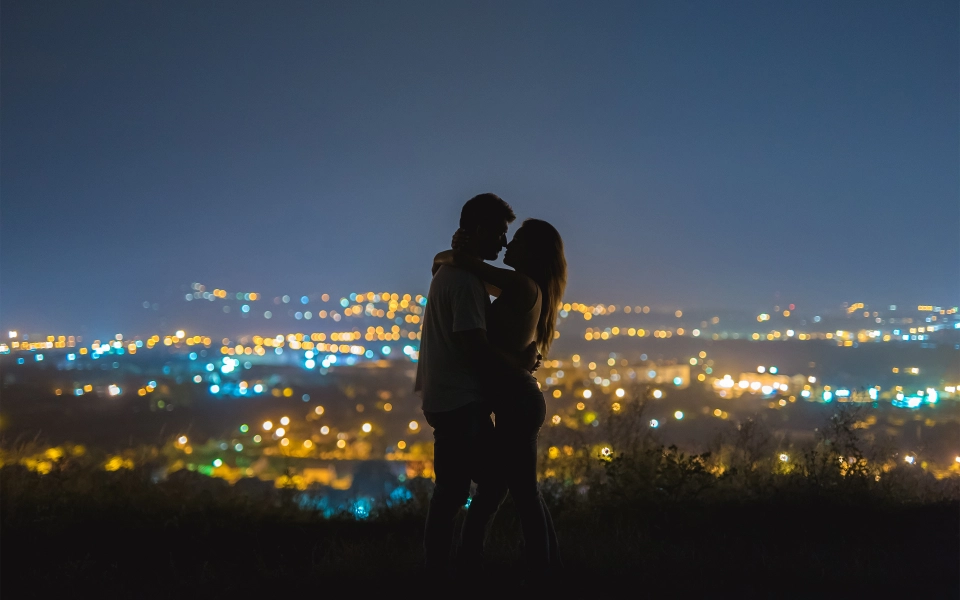Low light photography can present a unique set of challenges for photographers. Whether you’re capturing a breathtaking sunset, a cozy candlelit scene, or a romantic wedding reception, understanding the essential settings for low light photography is crucial to achieving stunning results. In this guide, we will explore the key settings that play a significant role in low light photography, from ISO to shutter speed. By mastering these settings, you’ll be equipped to capture beautiful images in challenging lighting conditions.
Quick Settings for Low light photography
Increase ISO:
Boost the ISO setting on your camera to a higher value (e.g., 800 or 1600) to increase the sensor’s sensitivity to light.
Use a wide aperture:
Select a low f-stop value (e.g., f/2.8 or wider) to open up the lens and allow more light to reach the sensor.
Slow down shutter speed: Consider using a slower shutter speed to allow more light into the camera. Use a tripod or stabilize the camera to prevent motion blur.
Shoot in RAW format: Capture images in RAW format to retain more details and flexibility during post-processing.
Consider spot metering: Use spot metering mode to measure exposure based on a specific area or subject within the frame.
Enable image stabilization: If your camera or lens has image stabilization, turn it on to help counteract camera shake in low light conditions.
Use noise reduction: If your camera offers built-in noise reduction, enable it to minimize digital noise at higher ISO settings.
Experiment with white balance: Adjust the white balance setting to account for the color temperature of the light source and achieve accurate colors in your images.
Consider using a fill flash: In certain situations, adding a fill flash can help balance the exposure and illuminate your subject in low light conditions.
Bracket your shots: Take multiple exposures at different settings (e.g., different ISO values or shutter speeds) to ensure you capture the best possible image in challenging lighting conditions.
Understanding ISO:
ISO refers to the sensitivity of your camera’s image sensor to light. In low light situations, increasing the ISO value allows your camera to capture more light, making the image brighter. However, a higher ISO setting can introduce digital noise, which can degrade the quality of the image. To strike a balance between brightness and noise, start with a moderate ISO setting, such as 800 or 1600, and adjust it based on the available light and desired effect. Newer cameras often handle higher ISO values better, so experiment to find the optimal ISO range for your equipment.
How do you shoot low ISO in low light?
To shoot with low ISO in low light, you’ll need to compensate by using other techniques to gather more light. Start by using a wide aperture (low f-stop value) to allow more light into the camera. Additionally, employ longer shutter speeds to capture more light. Utilizing a tripod or other stabilization methods can help avoid camera shake. Finally, consider using additional light sources, such as a flash or external lighting, to supplement the available light and maintain a low ISO setting.
Controlling Aperture:
Aperture, represented by the f-stop value, determines the size of the lens opening. In low light conditions, it’s advisable to use a wider aperture (lower f-stop value) to allow more light into the camera. A wider aperture also results in a shallower depth of field, which can help isolate your subject from the background. However, keep in mind that a wide aperture reduces the amount of the scene that is in focus, so adjust it based on your creative intentions and the desired level of sharpness.
Is F4 good enough for low light?
An aperture of f/4 can work in low light conditions, but it may not be ideal in all situations. While f/4 allows more light into the camera compared to narrower apertures, such as f/8 or f/11, it may still restrict the amount of light reaching the sensor, especially in extremely dim lighting. In low light photography, wider apertures like f/2.8 or even wider are often preferred to maximize light intake. However, the suitability of f/4 depends on the available light and desired depth of field. It’s important to assess the specific lighting conditions and adjust aperture accordingly to achieve optimal exposure and creative intent.
Setting the Shutter Speed:
Shutter speed determines the duration for which the camera’s shutter remains open, allowing light to reach the image sensor. In low light situations, using a slower shutter speed allows more light to enter the camera, resulting in a brighter exposure. However, longer shutter speeds can introduce motion blur if your subject or camera moves during the exposure. To avoid blur, consider using a tripod or stabilizing the camera against a solid surface. If capturing moving subjects, such as in a wedding reception, experiment with faster shutter speeds to freeze the action while still maintaining proper exposure.
Utilizing Manual Mode:
When it comes to low light photography, shooting in manual mode gives you full control over your camera settings. It allows you to fine-tune your ISO, aperture, and shutter speed to achieve the desired exposure and creative effect. While it may take some practice to become comfortable with manual mode, it offers the flexibility needed to adapt to varying lighting conditions and achieve consistent results.
Utilizing Available Light:
In low light situations, it’s essential to make the most of the available light sources. Take advantage of ambient light, whether it’s natural light from a window or artificial light from lamps or candles. Position your subject strategically to maximize the available light and create captivating compositions. Additionally, consider using light modifiers like reflectors or diffusers to enhance or soften the available light for a more pleasing result.
Using Flash:
In some cases, the available light may not be sufficient to achieve the desired exposure. In such situations, using an external flash or an on-camera flash can help illuminate the scene. However, it’s crucial to use flash judiciously and avoid harsh, direct lighting. Experiment with bounce flash techniques, where the flash is pointed at a nearby surface to diffuse and soften the light. This creates a more natural and flattering look, especially in low light situations.
Post-Processing for Low Light Photography:
Post-processing plays a significant role in enhancing low light photographs. Software tools like Adobe Lightroom or Capture One offer powerful capabilities to fine-tune exposure, reduce noise, and adjust colors in your images. When editing low light photographs, pay attention to noise reduction techniques to reduce the digital noise that may be introduced at higher ISO settings. Adjust the exposure, contrast, and white balance to achieve the desired look while maintaining the mood and ambiance of the low light scene.
Few more tips for low light photography-
Use a tripod: In low light situations, longer exposure times are often necessary. Using a sturdy tripod will help eliminate camera shake and ensure sharp images.
Shoot in RAW format: RAW files retain more information and provide greater flexibility for post-processing adjustments, especially in low light conditions.
Experiment with long exposures: Slow down your shutter speed to capture motion blur or create light trails, adding a sense of drama and creativity to your low light photographs.
Optimize your camera settings: Increase your ISO to boost the sensor’s sensitivity to light, open up your aperture (use a low f-stop value) to allow more light in, and adjust your shutter speed accordingly to achieve the desired exposure.
Utilize image stabilization: If your camera or lens has image stabilization, enable it to counteract camera shake and increase the chances of capturing sharp images in low light.
Use manual focus: In low light conditions, autofocus can struggle to find a proper focus point. Switching to manual focus and using the camera’s focus peaking feature or magnification can help ensure precise focus.
Take advantage of available light sources: Look for existing light sources, such as lamps, candles, or streetlights, and position your subject strategically to make the most of the ambient light.
Consider using a prime lens: Prime lenses with wider maximum apertures (e.g., f/1.8 or wider) allow more light to enter the camera, making them well-suited for low light photography.
Avoid using excessive noise reduction: While noise can be an issue in low light photography, applying too much noise reduction during post-processing can result in loss of detail. Find a balance between noise reduction and maintaining image sharpness.
Experiment and practice: Low light photography can be challenging, but with practice and experimentation, you’ll become more comfortable and proficient in capturing stunning images in challenging lighting conditions.
In short –
Mastering low light photography settings is a valuable skill for photographers. By understanding and controlling ISO, aperture, and shutter speed, you can capture stunning images even in challenging lighting conditions. Remember to experiment with different settings, take advantage of available light, and consider using flash judiciously to achieve optimal results. With practice and a creative eye, you’ll be able to capture the beauty and ambiance of low light scenes, creating captivating photographs that leave a lasting impression.

